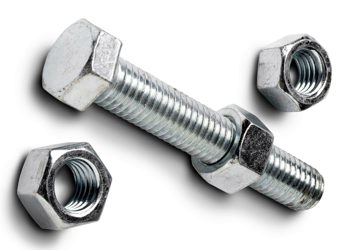

By Richard Rands, UK product manager for fastenings and fixings at HellermannTyton
The healthcare industry is currently placed under huge pressure due to the global Covid-19 pandemic. With the advancements in healthcare technology comes further use of electrical devices and greater hazard risks caused by the cables that power these devices. This article explains the importance of correct cable management in healthcare environments and how a range of easy to use products will help achieve more efficient care, as well as reduce the chance of transferring bacteria.
The global pandemic has seen the UK’s NHS pushed to its limits due to the number of infected Covid-19 patients needing medical care. The sheer volume of patient traffic raises a number of issues, including the transmission and prevention of infection. Controlling the spread of infection added to this stress for health estate managers and the scale of Covid-19 has reinforced the need for effective measures.
Cable management can be an aspect often overlooked around hospital beds. However, safely securing cables should be central to any discussion around best practice in bedside hygiene, on the grounds that this can significantly reduce the spread of infection.
The electrical cables used to power medical devices, as well as the tubes and pipes that are commonplace in medical equipment such as ventilators, are a potential breeding ground for viruses and bacteria. If standards of cleanliness are not adhered to, the likelihood of infection can increase.
Flexibility
It’s vital that any cable management solutions used are flexible and easy to secure and dismantle, in order to allow fast moving actions to occur when an emergency takes place.
Hygiene, safety, and identification of equipment are mandatory in the healthcare sector. Consequently, cable management products that support these requirements are essential accessories. For example, magnetic fasteners allow cables to be held securely when needed, but can be disconnected with minimal effort. Releasable cable ties are not only ideal for temporarily securing cables and tubes, and keeping items off the floor for hygiene purposes, but can also offer easy application where a bag or packet needs to be closed and re-opened.
As more patients bring devices of their own into the equation, additional burdens are placed on medical staff, who may be required to pick up cables that have fallen onto the floor on behalf of patients who are bed bound or have limited mobility. While this may seem insignificant, it amounts to an additional task, which takes personnel away from the critical task of caring for patients. When one patient vacates a bed, a routine discharge clean is undertaken to prepare the bed for the next occupant. For this to take place, equipment needs to be detached and removed prior to cleaning. Therefore, the ideal system needs to be quickly releasable, saving time and boosting productivity. An ideal system would also need to be reusable, providing the correct cleaning procedures were strictly adhered to.
Matter of material
The type of material used within cable management devices is also often overlooked. The use of specialist materials that are designed to perform at high temperatures, whilst also offering excellent chemical resistance, is vital in order to prevent infection from spreading. Some products are also suitable for autoclaving or gamma irradiation sterilisation, whilst others encompass anti-microbial properties.
Thermoplastic Elastomer (TPE) is an ideal material to use when it comes to cable management within healthcare as its blended polymers provide high strength resistance and flexibility; giving cable ties made from TPE excellent tear and abrasion resistance.
The material not only needs to be robust and strong, it also needs to be chemical resistant to be able to withstand the powerful cleaning agents used in hospitals. If not, chemical corrosion could reduce performance and create rough surfaces, which harbour bacteria and increase the risk of contamination and infection.
Printed cable ties, ID tags, and security seals, are also highly recommended as they are ideal for the secure closure and traceability of bags containing biological or medical waste or for use on medical equipment trolleys. They can also be used for securing cabinets containing sensitive products or materials or for identifying the tubes or cords on respirators and other equipment.
Given the scale of the issue, it makes sense to investigate any measures that reduce the impact of poor hospital hygiene. HellermannTyton is often approached by NHS Trusts, and other healthcare providers, to deliver cable management solutions designed specifically to reduce infection.
HellermannTyton helps UK hospice
A hospice based in the UK was experiencing a growing need for cable management due to the increasing number of wires surrounding beds, and turned to HellermannTyton for help. Messy cables posed a challenge to the hospice because, if not secured, these loose wires and cables were a trip hazard for patients and staff. There was also a major risk of cables being damaged by the wheels of beds during transit.
The hospice realised that solving this cable management conundrum also had an impact on infection control. Other solutions were considered, including the use of Velcro fastenings to secure cables, but it soon became apparent that these types of products were unsuitable for such environments.
As part of the development of the Cable Koala, HellermannTyton investigated various options for securing bedside wires, cables and tubes, including the use of similar ‘hook and loop’ fastenings. However, the rough texture of these materials provides a potential breeding ground for bugs and bacteria. It was for this reason that HellermannTyton designed the Cable Koala.
The magnetic cable tie is manufactured using a soft, flexible TPE material that delivers a smooth surface and is free from any indentations. This design prevents the build-up of undesirable bacteria. The result is a simple to use product that is compatible with the typical cleaning agents and chemicals used within hospitals and hospices, and with a quick release design the Cable Koala can be reused once cleaned.
Innovation
All manufacturers need to be aware of how they can create products to offer an easier way of working. It’s important to produce the highest quality of products, knowing customers can rely on their durability and safety.
Many industries are starting to adapt back to their usual ways of working from before the Covid-19 pandemic, which now may include PPE for personnel working in factories or the care industry.
Seeing what the healthcare industry has been battling over the past months, HellermannTyton has been researching and developing a range of healthcare products in order to provide comfort and reduce the chance of germs spreading to those working in high risk environments.
Some of the solutions available from HellermannTyton that are suitable for healthcare environments include the CTT-Series and TBT-Series cable ties designed to form perfectly around the cylindrical shape of medical tubing. The ACB-Series cable ties are made with a high-performance polymer that can withstand repeated sterilisation by gamma irradiation and autoclaving. Also available in the range are the PT-Series ties; which offer a unique outside-serrated design, and the MGT-Series; which is made with anti-microbial materials.
The final new products in HellermannTyton’s healthcare range include the EasyDoor multi-function handle and the Mask-E Guard. Both are designed to provide comfort and safety for those requiring PPE. The Mask E-Guard specifically relieves tension and strain from the ears when wearing a facemask.
Infection prevention remains a critical issue in hospitals and can be addressed by implementing more intelligent and innovative solutions. HellermannTyton is committed to working with the healthcare industry to ensure its cable management solutions provide the safety needed for staff and patients in hospitals and hospices.





